Essential Factors for Thriving Lavender Growth
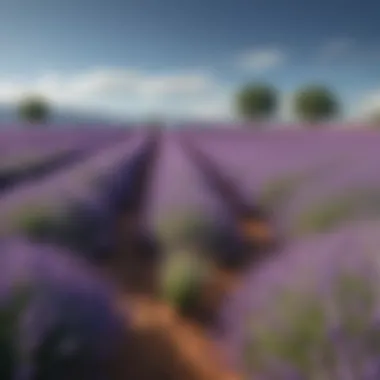
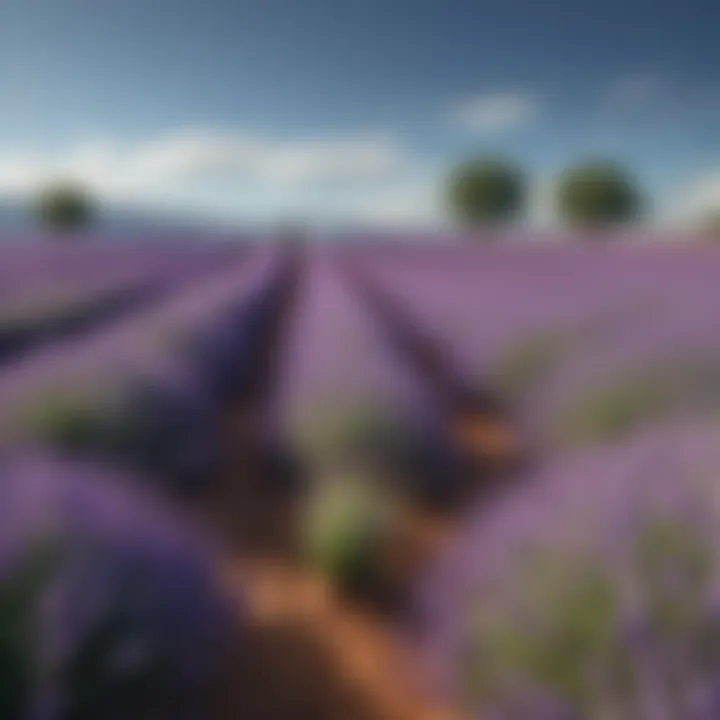
Intro
When thinking about growing lavender, it’s not just about tossing a few seeds in the ground and hoping for the best. There are layers to cultivating this beautiful herb that can elevate a garden into a fragrant paradise. Lavender is more than just a pretty face; it’s a plant that thrives under certain conditions which, when understood, can lead to bountiful harvests and stunning blooms.
In this journey, we'll explore the environmental factors that play a key role in the growth of lavender. From climate considerations to soil specifics and everything in between, this guide aims to equip both novice and seasoned gardeners with the knowledge they need for successful lavender gardening.
Key Insights and Trends
To cultivate lavender effectively, it's crucial to keep an eye on current trends in gardening and the broader market as well.
Some main trends include:
- Drought-Resistant Planting: As water scarcity becomes a relevant concern, gardeners are increasingly turning towards plants like lavender, which requires less water once established, making it an excellent choice for sustainable gardening.
- Aromatic Landscaping: There’s a shift towards designing outdoor spaces that engage the senses. Lavender, with its iconic scent, offers not just beauty, but also a sensory experience that attracts both pollinators and people alike.
Current Trends in Gardening
- Permaculture Practices: Many gardeners are embracing permaculture, creating environments that work with nature’s systems rather than against them. Lavender plants fit well into these systems as they can thrive together with various other plants, promoting biodiversity.
- Container Gardening: With urban living on the rise, container gardening is becoming popular. Lavender grows well in pots, making it accessible for city dwellers with limited space.
Practical Tips and How-To Guides
Cultivating lavender requires thought and planning. Here are some practical tips to ensure your lavender garden flourishes:
- Choosing the Right Variety: Determine which lavender variety suits your space and purpose. English lavender, for example, is great for culinary uses while French lavender attracts pollinators.
- Soil Preparation: Lavender prefers well-drained soil. Aim for a sandy loam that allows excess water to flow. Consider mixing in some gravel or sand to enhance drainage, it’s like giving your plants a little breathing room.
- Sunlight Requirements: Plant lavender in an area that gets full sun, about 6 to 8 hours a day. Too much shade can lead to weak, leggy plants.
- Watering Practices: When establishing new plants, water them regularly for the first few weeks. After that, let them dry out between waterings. Remember, lavender doesn’t like soggy roots.
- Pruning Techniques: Regular pruning helps maintain shape and encourages bushier growth. Usually, a light trim in the spring and a more significant cut after flowering in summer do wonders.
"Proper care and understanding of lavender's needs can elevate your gardening to an art. Don't rush it; patience brings its own sweet rewards."
With these insights and tips, you are now on your way to creating a splendid lavender garden. The journey doesn’t end here; understanding the specifics of climate and local soil types will further enhance your chances for success. Keep reading on how to address potential challenges and solutions as we dive deeper into the world of lavender cultivation.
Prelude to Lavender Cultivation
Lavender is not just a pretty plant that adorns gardens; it serves a multitude of purposes that make it a fundamental herb in various cultures worldwide. Understanding how to cultivate lavender effectively is key for anyone looking to harness its beauty and benefits. This segment covers the significance of lavender cultivation and provides crucial insights into its historical roots and practical applications, aiming to equip readers with the knowledge needed for successful gardening.
Historical Background of Lavender
Tracing the lineage of lavender reveals its rich history. This herb has been woven into the fabric of human civilization for thousands of years. Originally hailing from the Mediterranean region, lavender was utilized by the ancient Egyptians for mummification, showcasing its significance in rituals and preservation. The Romans, known for their love of baths and relaxation, employed lavender not just for fragrance but also for its reputed healing properties. As the centuries rolled on, lavender moved through Europe, becoming a staple in medieval gardens where it was esteemed for its soothing aroma and antiseptic qualities.
The term "lavender" itself comes from the Latin word "lavare," which means to wash. This connection to cleanliness and purification highlights how deeply ingrained lavender is in both historical and modern cultural practices. Today, the popularity of lavender has spread to various continents, bolstered by its adaptability and wide range of uses.
Significance and Uses of Lavender
Lavender transcends the boundaries of a mere ornamental plant; it yields essential oils, culinary herbs, and even natural remedies. The significance of lavender in every day life is manifold:
- Aromatherapy: Lavender oil is one of the most sought-after essential oils for its calming effects. It promotes relaxation, making it a favorite among those coping with stress.
- Culinary Uses: In the kitchen, lavender adds a unique twist to both sweet and savory dishes. From lavender-infused desserts to herbal blends, this herb enhances flavors and invites culinary creativity.
- Medicinal Applications: Historically used to treat ailments ranging from anxiety to headaches, lavender offers potential anti-inflammatory and antiseptic benefits.
Beyond these applications, cultivating lavender contributes positively to local ecosystems. It attracts pollinators like bees, thereby supporting biodiversity. In addition, the plant's drought-resistant nature makes it an excellent choice for sustainable gardening practices.
"Lavender is more than just a plant; it's a testament to human ingenuity in utilizing nature for healing and beauty."
Geographical Regions Favorable for Lavender
The significance of identifying suitable geographical regions for lavender cultivation cannot be overstated. Lavender thrives in environments that align with its natural habitat, meaning that conditions significantly influence its health and productivity. By understanding these geographical nuances, gardeners can not only enhance the quality of their crops but also optimize their cultivation methods to fit the specific landscape of their region. It’s not just about manual care; it's about letting nature do its part simply by planting lavender in regions where it grows best.
Mediterranean Climate Zones
One of the prime regions for lavender cultivation is undoubtedly the Mediterranean climate zone. This area, characterized by hot, dry summers and mild, wet winters, provides an ideal backdrop for growing lavender. Countries such as France, Spain, and Italy have long been synonymous with lavender fields that stretch as far as the eye can see.
Key considerations for Mediterranean climates include:
- Temperature: Lavender flourishes in warmer temperatures, often preferring areas that experience highs above 70°F (21°C) during the growing season.
- Rainfall: Low to moderate rainfall is essential. Excessive moisture can lead to root rot, which lavender is susceptible to. The dry summer months help concentrate its essential oils, enhancing its aromatic properties.
- Soil Drainage: These regions typically have well-draining soil, further promoting healthy root development.
Growing lavender in these zones not only results in healthier plants but also improves the economic potential for farmers, often leading to greater yields and lucrative harvests.
North American Lavender Farming
In recent years, North America has become a burgeoning location for lavender farming. States like Washington, California, and Michigan have started to create a solid reputation for high-quality lavender products. However, North American growers face unique challenges compared to their Mediterranean counterparts.
The following factors are crucial for successful lavender farming in North America:
- Climate Variability: Northern areas may experience cooler temperatures, but many lavender variants are resilient enough to adapt. Growers should select species that can thrive in their specific regional climate.
- Season Length: In colder climates, having a sufficiently long growing season is vital. Farmers often use techniques like choosing heat-retaining site locations to extend the growing period.
- Market Demand: There is burgeoning consumer interest in locally sourced, high-quality lavender products, giving North American growers a competitive edge in specialty markets.
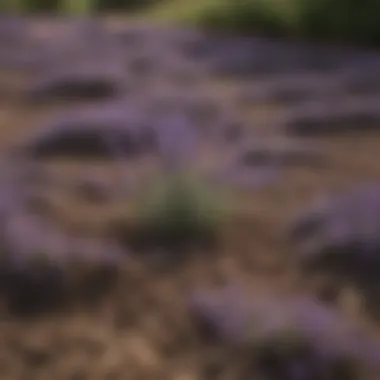
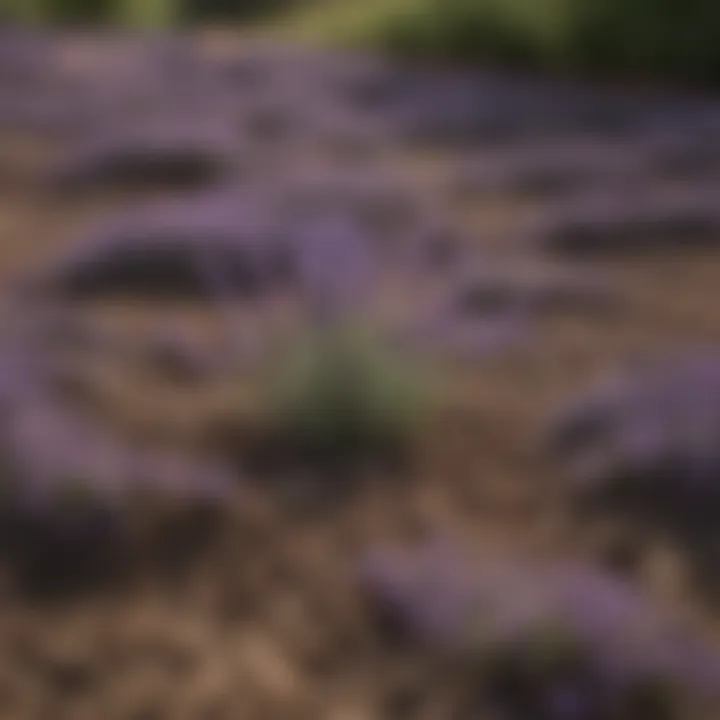
With the right preparation and understanding of their local environment, many North American farmers can tap into the lavender business successfully, promoting both sustainability and profitability.
Emerging Lavender Regions Worldwide
Interestingly, lavender is not confined to the Mediterranean or North America anymore. The plant has made its mark in regions that were once considered unsuitable for this crop. Countries such as Australia, New Zealand, and even parts of South America have started to embrace lavender farming, adjusting cultivation techniques to marry local climatic conditions.
Considerations for these emerging lavender regions include:
- Adapting Cultivation Practices: Growers must carefully assess factors such as local soil types and rainfall patterns. This may require modifications to traditional farming methods used in more established growing regions.
- Increasing Awareness: As the demand for lavender increases globally, these areas can capitalize on the trend, bringing unique products to market that feature distinct flavor profiles and fragrances.
- Community Support: Small-scale farmers in these regions often work together to build cooperative networks, which can facilitate skills sharing and access to resources.
With careful planning and experimentation with different lavender varieties, these emerging regions may soon become as well-known as the classic lavender fields of Provence.
Soil Requirements for Lavender Growth
Soil is more than just a bed for plants; it’s the lifeblood of gardening. For lavender, whose roots extend as deep as a person’s worries, having the right soil composition is paramount. The health of lavender plants hinges not only on soil quality but also on its texture and nutrient availability. Each element plays a pivotal role in fostering a robust plant that can thrive.
Ideal Soil Composition
Lavender flourishes in well-draining soil that mimics the rugged terrains of the Mediterranean, where it hails from. This means that a mix of sandy and loamy soil would be right up its alley. The key is to avoid heavy clay, which traps water and can turn roots into mush.
- Sand and silt ratio: Aim for a blend of about 50% sand and 50% silt or loam. This combination creates gaps for air and water while supporting adequate plant nutrition.
- Organic matter: A smidge of organic matter, such as compost, can do wonders without overwhelming the roots. Think of it as a gentle hug around the base of the plant. Just remember, too much compost might end up suffocating lavender.
- Beneficial minerals: Enhancing soil with natural minerals like perlite or gravel allows drainage to flourish. It’s like giving a gift of air to roots that need to breathe.
Soil pH Levels
The pH factor is like the undertone of a color palette; it sets the vibe. Lavender prefers a slightly alkaline to neutral pH, averaging around 6.0 to 8.0. If the soil tilts towards acidity, it can stunt growth and result in a less vibrant bloom.
- Testing: A simple soil test can reveal the pH levels. Kits are often inexpensive and easy to use.
- Adjusting pH: If your soil leans acidic, adding lime can help shift it towards the alkalinity that lavender loves. A bit goes a long way, so take it slow and monitor changes.
- Regular maintenance: Maintaining this balance not only protects your lavender but also benefits any other plants sharing the same soil.
Enhancing Soil Draining Capacity
Good drainage doesn’t just help avoid soggy soil; it also keeps roots from drowning. Lavender prefers its feet dry and airy. To enhance soil drainage, consider the following practices:
- Amend with organic material: As mentioned earlier, mixing in compost isn’t just to add nutrients—it's also about improving the texture of the soil.
- Raised beds or mounds: If drainage is a persistent problem, plant lavender in raised beds. This elevates the roots above potential flooding. Plus, it can be visually appealing in a garden!
- Mulching: Using gravel or small stones as mulch keeps moisture in check while allowing excess water to escape. It’s practically like putting a little umbrella over the plants—they stay dry without losing hydration.
"The right soil is the secret sauce to a flourishing lavender garden. It’s the difference between a wilted plant and a vibrant display of color and fragrance."
Climate Preferences for Lavender
Understanding the climate preferences for lavender is a cornerstone of successful cultivation. Lavender thrives in specific weather conditions that closely mirror its native Mediterranean origins. For homeowners and gardening enthusiasts, recognizing these conditions is critical to ensuring vibrant growth and rich blooms.
Temperature Tolerance
Lavender shows notable resilience to temperature variations. Ideally, it flourishes in temperatures ranging from 15 to 30 degrees Celsius (59 to 86 degrees Fahrenheit). Once established, many lavender varieties can withstand even harsh conditions. They are remarkably frost tolerant, making them suitable for a wider range of climates than many people realize.
However, it’s not just about extremes; climatic consistency plays a critical role in lavender vitality. Extreme heat or cold can stress plants, leading to stunted growth or, in worst cases, plant death. This is particularly crucial for gardeners in regions with significant fluctuations. Growers should consider raised beds or pots to improve soil drainage and control temperature.
Sunlight Requirements
Lavender is a sun-loving plant. It requires full sunlight for optimum health, typically needing a minimum of six to eight hours of direct sunlight daily. This exposure enhances photosynthesis, leading to robust foliage and stronger aromas.
When planted in shady areas, lavender tends to become leggy and sparse. It’s advisable for gardeners to assess the light conditions of their planting site throughout the day. If planting in an area that receives partial shade, it may be beneficial to prune nearby plants or consider relocating lavender to a sunnier spot.
"Lavender thrives best where the sun kisses the earth, revealing its vibrant hues and delightful fragrance."
Humidity Levels and Effects
Lavender adapts well to dry conditions, making it less forgiving in high humidity. Ideally, the relative humidity should hover between 40% to 60%. Too much moisture can lead to fungal diseases that might rot the roots or cause other complications. For those gardening in humid climates, it's paramount to ensure proper air circulation around the plants to reduce the risk of such diseases.
It’s helpful to assess local weather patterns before planting. Utilizing raised beds and ensuring well-drained soil can help in managing water retention, thus keeping humidity at bay. Additionally, understanding regional climate trends can guide potential lavender growers on the best varieties to choose for their specific conditions.
In summary, knowing the climate preferences for lavender not only enhances its growth and aesthetics but also ensures a gardener's efforts yield successful results. When properly matched to its environmental needs, lavender can transform spaces into aromatic havens, offering beauty beyond compare.
Watering Practices for Lavender
Watering is a crucial aspect of cultivating lavender, as it directly affects the plant's health and overall yield. Lavender, being a drought-tolerant herb, requires a balance in moisture levels to thrive. Too much or too little water can lead to serious issues, including root rot or stunted growth. Understanding how to effectively manage watering not only keeps your plants healthy but also optimizes your efforts in lavender cultivation.
Understanding Lavender's Water Needs
Lavender plants do not appreciate the soggy conditions that many other plants love. They prefer well-drained soil and can handle quite a bit of neglect when it comes to watering. Ideally, these plants require watering only once the top inch of soil is dry. This allows their roots to stretch and explore deeper into the ground in search for moisture, thus promoting robust growth.
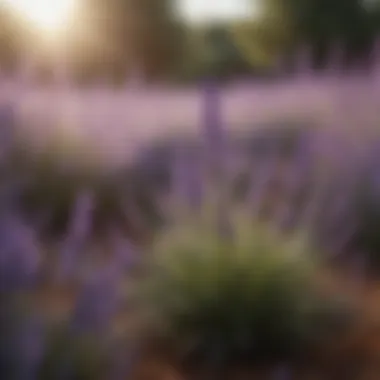

When planting lavender in your garden, keep in mind the weather and soil type. Factors such as sandy soil drain faster than clay, meaning your watering practices will have to adjust accordingly. Most often, lavender plants need about an inch of water per week during active growth periods, but this varies by climate and soil conditions.
Irrigation Techniques
Selecting the right irrigation technique can significantly improve the health of your lavender plants. Some common methods include:
- Drip Irrigation: This technique delivers water directly to the root zone, minimizing evaporation and runoff. It’s ideal for targeted moisture delivery and ensures that the plant receives consistent watering without the risk of over-saturation.
- Soaker Hoses: Similar to drip irrigation, soaker hoses slowly release water along their length, soaking the soil gradually. They are convenient for lavender beds, ensuring a uniform watering that doesn’t allow puddles to form.
- Hand Watering: For smaller gardens or pots, hand watering allows for close monitoring. Consider using a watering can with a spout or a hose with a nozzle that can adjust to a gentle spray.
Each method can be effective, depending on your garden's size and your personal preferences. Choose one that suits your lifestyle and the specific needs of your lavender.
Signs of Overwatering or Underwatering
Recognizing signs of water-related stress is vital.
- Overwatering: Look for yellowing leaves, wilting despite wet soil, and a musty odor under the foliage. It’s often more serious than underwatering and can quickly lead to root rot.
- Underwatering: Signs include drooping flowers, dry and crispy leaf edges, and a lack of any new growth. When plants are thirsty, they prioritize survival over blooming, leading to sparse flower production.
In summary, keeping a close eye on your lavender’s condition and adjusting your watering practices accordingly ensures that your plants flourish. By employing effective irrigation techniques and recognizing the signs of distress, you can cultivate beautiful, vibrant lavender.
Cultivation Techniques
Cultivating lavender is not just a hobby; it's an art form that combines science and practice. When done correctly, the results are not only visually appealing but can also yield fragrant flowers that enhance any garden or indoor space. Each cultivation technique contributes significantly to the overall health of the plants, and understanding these methods is essential for success.
Propagation Methods
Propagating lavender can be achieved through various methods, including seeds, cuttings, and layering. Each method offers different advantages.
- Seeds: Starting from seeds can be rewarding but may require patience. Optimal germination typically occurs when seeds are sown indoors under controlled conditions. They need warmth and a bit of light, so don’t skimp on that! Once the seedlings are strong enough, they can be transplanted outdoors.
- Cuttings: This is often the favorite choice among gardeners because it guarantees genetic similarity to the parent plant. To propagate through cuttings, select well-hydrated, healthy stems, preferably from young plants. Make clean cuts, remove lower leaves, and dip the cut end in rooting hormone. Placing them in a moist medium will spark root development.
- Layering: This method involves bending a low, nutrient-rich stem and allowing it to root in the ground while still attached to the parent plant. After several weeks, when roots are evident, it can be severed and planted elsewhere.
Using these propagation techniques ensures that the new plants begin their lives in optimal conditions, setting them up for success as they mature.
Pruning and Maintenance
Pruning lavender isn't just about aesthetics; it serves essential health benefits that can significantly affect growth and bloom quality. Regular maintenance is a must, ensuring that plants maintain their vigorous life.
- Timing: The best time to prune is in the spring, just as new growth appears. Late winter pruning can also be effective in milder climates.
- How to Prune: Use sharp, clean shears. Trim down about one-third of the plant without cutting into the woody stems, as this can damage the plant’s structure.
- Benefits of Maintenance: Effective pruning improves air circulation and light penetration, reducing the risk of disease. It also encourages new growth, making the plants more robust and increasing yields.
Maintain your lavender by clearing away any dead or woody stems and cleaning around the base to prevent pests. Regularly checking for signs of disease is crucial; catching issues early can save your plants from serious harm.
Fertilization Strategies
Lavender, not known for needing heavy feeding, does respond well to some nutrients to support healthy growth. The primary goal here is to enhance soil fertility without overwhelming the roots.
- Soil Testing: Have your soil tested to determine its nutrient content. This can unveil deficiencies that might be corrected through fertilization, making sure that your plants have what they need.
- Type of Fertilizer: Look for granular fertilizers that are low in nitrogen but rich in phosphorus and potassium. An ideal N-P-K ratio for lavender might be 5-10-10.
- Application Duration: Fertilize during the growing season, typically in early spring and maybe once more about halfway through. Avoid fertilizing in late fall as preparation for winter is vital, and too much nutrient can cause weak growth.
"Proper fertilization leads to healthy roots and blossoms that proudly display their colors."
By mastering these cultivation techniques, you set the stage for flourishing lavender plants that can thrive in various conditions, offering beauty and fragrance to your garden or home. The rewards of dedication and proper care can turn a simple planting into a lush, sensory delight.
Pest and Disease Management
Managing pests and diseases is a crucial aspect of lavender cultivation. Without addressing these threats, even the healthiest lavender plants can face significant challenges, ultimately affecting yield and quality. This section will discuss the common pests that target lavender, preventative measures for diseases, and effective organic remedies that protect your plants.
Common Pests that Affect Lavender
Lavender, while resilient, can attract unwanted guests. One of the most frequent culprits is the lavender aphid. These small, typically green insects cluster on new growth, sucking the sap from the plant. Their presence can lead to stunted growth and distorted leaves. Another notable pest is the spider mite, especially in dry climates; they weave fine webs on the undersides of leaves, leading to yellowing and eventual leaf drop. There’s also thrips, which can cause silver streaks on leaves, making plants appear unhealthy. Each of these pests presents unique challenges, but knowledge is power.
Preventative Measures for Diseases
A proactive approach is paramount when it comes to preventing diseases that can afflict lavender. One key measure is ensuring good air circulation around plants, which can reduce humidity levels—an environment that can encourage fungal infections. Practicing crop rotation is also beneficial; planting lavender in a different location each season helps break any pest and disease cycles that may develop in the soil. Regularly inspecting plants for any signs of disease or pests can help catch issues early. If you notice anything unusual, swift action can save your plants.
Organic Remedies and Treatments
When pests or diseases do make an appearance, organic remedies can effectively tackle these issues without harsh chemicals, which might harm the beneficial organisms in your garden. A popular treatment is using neem oil, derived from the seeds of the neem tree. This oil disrupts the life cycle of pests, making it hard for them to thrive. Another option is insecticidal soap; it coats soft-bodied insects, blocking their breathing pores and leading to their demise.
"An ounce of prevention is worth a pound of cure."
In addition, garlic spray can deter pests while being entirely organic. This spray is easy to make: blend garlic cloves with water, let it steep, and then strain. Spraying it on lavender not only keeps pests at bay but also fosters a healthy garden environment.
Harvesting and Post-Harvest Practices
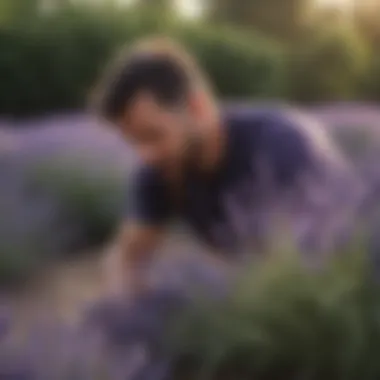
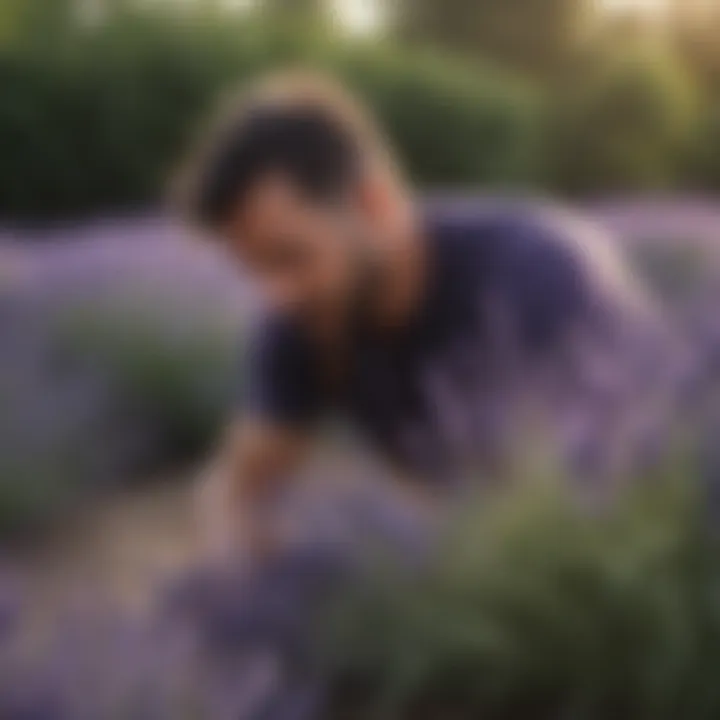
In lavender cultivation, the phase of harvesting and post-harvest practices holds significant weight for ensuring the quality and longevity of the harvested flowers. This stage is not merely a routine; it can have a profound impact on the fragrant essence and overall value of the lavender produced. Proper timing and techniques during the harvest contribute immensely to preserving essential oils and enhancing the potential for various marketing avenues, be it for culinary uses, aromatic products, or decorative arrangements.
Timing the Harvest
Timing is everything when it comes to harvesting lavender. To achieve optimal oil concentration, it’s generally best to pick the flowers just as they begin to open. This phase, often referred to as the "bud stage," is key. The flowers should not be fully open, as that can lead to a loss of essential oils during drying. Homeowners looking to cultivate lavender can start observing their plants in late spring to early summer.
Often, a good rule of thumb is to check the plants early in the morning after the dew has evaporated but before the heat of the day sets in, as the oils are most concentrated then. Furthermore, various species may have slightly different harvesting windows; for example, Lavandula angustifolia typically requires a different time frame compared to Lavandula stoechas.
Drying Techniques
After harvesting, the way lavender is dried can make or break the final product. There are several methods available, but air drying is the most traditional and effective process. Here’s a simple outline of steps that can be followed:
- Bunching: Gather stems in small bundles. If the bundles are too large, airflow can be restricted, which will lead to mold.
- Hanging: Hang the bundles upside down in a well-ventilated area away from direct sunlight. Good airflow is critical for preventing dampness and preserving color and fragrance.
- Monitoring: Check on the drying process regularly. Depending on the humidity of the environment, the drying time can range from a week or two.
Another alternative is using a dehydrator, ensuring the lavender is evenly spread out to avoid sogginess. Whatever method you choose, make sure it's done gently, as the flowers are delicate and can easily bruise, impacting the scent and appearance.
"The essence of lavender lies in its careful harvest and the drying process; a misstep can lead to the loss of those enchanting aromas."
Storing Lavender for Longevity
Once dried, it’s important to store lavender properly to maintain its quality. The first step is to ensure the dried buds have cooled down after the drying process. Once cooled, you can place them in air-tight containers such as glass jars or vacuum-sealed bags. This measure prevents moisture from getting in, as it can lead to deterioration.
It's best to keep the containers away from direct sunlight and in a cool, dark place. A climate-controlled room or pantry often works well. Keeping the lavender whole rather than crushed will help retain its fragrance, allowing it to last significantly longer. Here are some key points to consider:
- Avoid storing lavender in plastic containers, as plastic can harbor moisture.
- Keep away from strong scents to prevent flavor contamination.
By adhering to these practices, gardeners can enjoy their lavender harvest for extended periods, and the aroma will linger long after the season has passed. Proper harvesting and post-harvest practices not only enhance the quality of the lavender but also amplify its marketability, making it a worthwhile pursuit for any lavender enthusiast.
Challenges in Lavender Cultivation
Lavender cultivation evokes thoughts of aromatic fields, relaxing gardens, and soothing herbal remedies. However, diving into this world isn't always straightforward. The challenges in lavender cultivation are as important as the optimal conditions previously discussed. It's crucial for gardeners and enthusiasts to recognize these pitfalls to effectively mitigate risks and ensure thriving plants.
Environmental Stress Factors
Lavender is known for its resilience, yet it remains vulnerable to certain environmental stressors. One significant factor is temperature fluctuations. Inconsistent temperatures can lead to stunted growth. For example, unexpected frost during budding can ravage a promising harvest. Therefore, understanding local climate patterns is key for growers: adopting measures to protect seedlings during the harsh months can make a difference.
Moreover, pests and diseases pose their own set of troubles. Root rot is a common killer, often caused by overly wet conditions. Regularly monitoring for signs of disease is vital. Good air circulation and proper spacing between plants not only facilitate healthy growth but also help in warding off diseases.
In areas where humidity controls are less predictable, it’s wise to consider specialized fungal treatments or preventive measures. As you can see, the environment plays a crucial role and adapting to local conditions can mean the difference between success and failure.
Economic Considerations
Lavender farming can be lucrative, but it’s not without its economic challenges. Initial costs can be high. From purchasing high-quality seedlings to investing in irrigation systems and tools for maintenance, the upfront investment can cause a sticker shock. Additionally, labor costs for planting, maintaining, and harvesting lavender can add significantly to the budget. Farmers must weigh these expenses against potential income.
Market demand also fluctuates. The popularity of lavender products like essential oils and sachets can be volatile, influenced by trends in aromatherapy and wellness. Growers might find themselves sitting on stock if the market dips – this necessitates a thorough understanding of market dynamics and strategic timing of sales.
To navigate these challenges, many lavender farmers find it beneficial to diversify their business models. This might include offering workshops, creating lavender-related products, or even hosting pick-your-own events during peak growing season to attract visitors and boost revenue.
"The key to mitigating challenges in lavender cultivation lies in planning, adaptability, and community engagement."
In summary, while opportunities abound in lavender cultivation, understanding and addressing environmental stresses and economic factors remain vital. Farmers and hobbyists alike can benefit from staying informed and preparing for the road ahead.
Closure
Lavender is not just a visually captivating plant; it offers a cornucopia of benefits, from attracting pollinators to providing calming scents and even medicinal properties. This makes it a wonderful addition to gardens for homeowners, interior design aficionados, or anyone looking to spice up their outdoor spaces or create a serene environment indoors.
Summary of Best Practices
- Soil Quality: Ensure that the soil has good drainage with a pH ranging from 6.5 to 7.5.
- Watering: Be mindful of not overwatering. Deep watering every two weeks during dry spells is generally adequate.
- Light Exposure: Place lavender where it can bask in full sunlight for at least 6 to 8 hours a day.
- Pruning: Regularly prune back your plants to promote healthy growth and prevent leggy behavior.
- Pest Management: Organic solutions should be used for any infestations, maintaining the integrity of your growing environment.
These practices serve to reinforce the health and vitality of lavender plants. If adhered to, they can lead to bountiful blooms that are visually stunning and beneficial.
Future Trends in Lavender Cultivation
Looking ahead, the future of lavender cultivation seems promising, largely influenced by the integration of technology and evolving consumer preferences. Hydroponic methods are gaining traction, allowing for the controlled environment where sunlight and nutrients can be maximized. Urban gardening is also on the rise; as more city dwellers yearn for greenery in small spaces, the application of vertical gardening techniques can accommodate lavender's growth.
Furthermore, the push toward organic and sustainable farming practices means lavender will increasingly thrive in settings that eschew harmful pesticides and synthetic fertilizers. Emphasizing biodiversity through companion planting is also becoming a common practice, which helps manage pests naturally and promotes a healthier ecosystem.
This combination of technological advancements and a shift toward environmentally friendly methods indicates a bright future for lavender cultivation, making it an appealing venture for a new generation of gardeners.
By recognizing these trends and implementing best practices, enthusiasts can ensure that their lavender garden is not just a fleeting project, but a long-lasting source of beauty and utility.
"Understanding the intricate balance of optimal growing conditions is the key that unlocks the full potential of lavender cultivation."
Lavender, with all its charm and utility, beckons onlookers and cultivators alike to embrace its myriad possibilities. After all, a well-tended lavender plant isn't merely a crop; it's a gateway to a myriad of sensory and emotive experiences.



